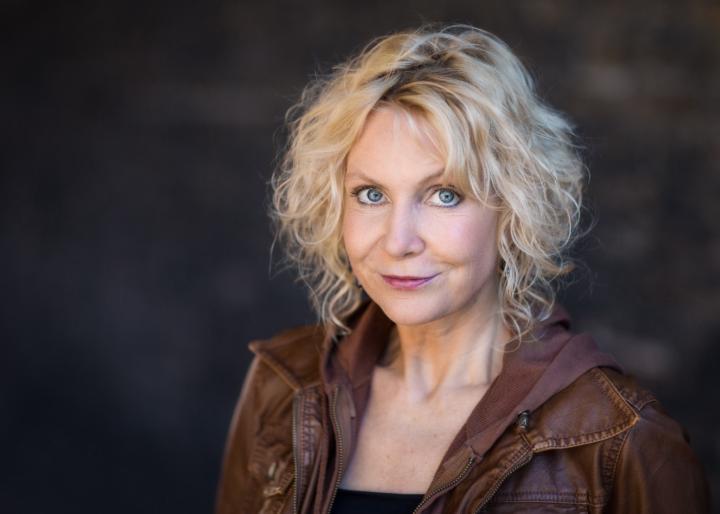Activity
Mon
Wed
Fri
Sun
Nov
Dec
Jan
Feb
Mar
Apr
May
Jun
Jul
Aug
Sep
Oct
What is this?
Less
More
Memberships
One Grand Film Skool
769 members • $47/m
10 contributions to One Grand Film Skool
First draft of my Screenplay is complete!
I'm glad to say I completed the first draft of my feature screenplay, written with the limitations for cast and locations as AJ suggested. Limitations seem like things that can stop your progress at first, but they definitely give you a focus for your creativity. I wrote throughout September and finished on the 1st of October! So I just wanted to check in and let you guys know that I found the discipline of writing an enormously fulfilling process in itself. 📽️✍️
Tactical Q&A Recap - Friday Sept 12th
This week was about getting unstuck: turning a stage show into a feature, locking the legal/LLC steps without spinning out, and packaging projects so you can actually raise money (without waiting two years for a “maybe”). 🎬 PROOF BEATS PROMISES If you’ve got a live show, book, or reel, you already have a voice. Convert that into leverage with a feature you control. Keep the stage show alive—let the film and show feed each other. You’re not “cannibalizing” until you’re a household name; you’re multiplying touchpoints that sell the same core story and your merch. ⏱️ WHAT COUNTS AS A PROOF FEATURE Aim for 75–90 minutes. Character-forward, location-light. The goal is to prove you can hold audience attention over feature length. Competence plus completion beats spectacle you can’t afford. 📍 HOW MANY LOCATIONS Target three core locations and keep the total under six. Cluster them close to reduce company moves. Cars and nature are free production value and keep frames visually alive. 🧭 TURNING A PERSONAL STORY INTO A FEATURE Compress the world to what you already have: apartments, cars, phones, laptops. Keep the real spine, lose the expensive edges. You are the showcase, so build scenes that let performance carry the weight. ✍️ WRITING VS REWRITING Get the script to 90% functional, then move into packaging. You’ll keep rewriting in prep and on set anyway. Endless polish is a stall tactic—advance the ball once the concept is clear and producible. 🌫️ ABSTRACT VS CLARITY Style is great, but give enough context that we know how the characters got here. With addiction stories, show what the drug is covering. Deliver the feeling and answer the core “why.” 🎞️ RESHOOTS, OLD FOOTAGE, AND CREDITS If a sequence works, don’t reshoot just because a past collaborator is messy. Unless you lack a work-for-hire and risk a real legal challenge, keep the good scene and move on. A credit card at the end won’t sink your film. 🎭 CASTING DIRECTORS AS FORCE MULTIPLIERS When you need names or strong up-and-comers, a casting director’s relationships can open doors an agent won’t. Share a tight deck with archetypes and age ranges; let them bring you realistic, gettable targets.
Introduce yourself!
Welcome to One Grand Filmmakers 👋 🎉 In this community, I'll show you how I turned a $1,000 feature film into 3 more features, a full-time career in filmmaking, and relationships with the biggest names and platforms in the industry. But first... Please, introduce yourself :) (EXTRA CREDIT: Like 5 other posts, and welcome other filmmakers to the community as well!) Let's goooooo! 🚀
The LIE Assignment
1. As an actor in my 30s & 40s I did loads of casting director workshops. Ultimately I did get work from them, but only in the co-star & guest star realm where I still exist now, in my 50s. As a writer/director I've cold queried, submitted to one competition after another, joined networking groups, had films screen in festivals, etc. etc. 2. 4 decades and thousands of dollars spent and I'm no closer to attaining my dreams. I do actually have a career in the business and am fortunate to get to work on some really great projects with amazingly talented people, but not in the capacity I want. I often feel I'm merely a cog in a wheel helping to facilitate someone else's dreams. 3. My biggest takeaway is that I wish I would've come across your site 6 months ago before I spent another $12k on a proof of concept lol. 4. My biggest fear or concern is that the film I'm trying to get made right now (which requires real financing) is the most important story I have to tell and I may run out of time without ever seeing it come to fruition.
1 like • 1d
I hear ya. Though I’m envious that you’re at least able to earn an income by acting. That’s only available for a very few fortunate ones here in Ireland, hence so many actors moving to London… (not possible for me). I hate my (well paying) day job but bills need to be paid. Parts being offered here are one-liners to big productions that shoot in Ireland because of the tax incentive. I just saw another actor do a part I auditioned for in WEDNESDAY: “vet comes to door, says ‘Just a moment’ and gets hit over the head”, the end 😝 MAJOR acting challenge 🤣 Just filmed a hair salon owner, saying “Always nice to see you, XY”, the end. I wouldn’t mind so much if these parts were mixed with auditions for actual good parts but those are being cast in the States & London, and I wouldn’t be considered for them anyway. I’m tired after decades of fighting and trying. It’s high time to make my own movie now.
📣 New Course Drop: The INVESTORLESS Feature Film
The Investorless Feature Film Course is Live Inside the Community Alright, filmmakers — this is the big one. The full Investorless Feature Film course (aka The Indie Film Flywheel) is now live in the Classroom tab. If you’ve been serious about making your first feature — without waiting for permission, investors, or “someday” — this is the step-by-step roadmap you’ve been looking for. Why you should take it (right now): 🎯 Clarity: Learn the only replicable career strategy that works for actors, writers, and directors — making a small, personal feature with the resources you already have. 🔥 Speed: Cut years of trial-and-error and get from idea → finished film faster than you thought possible. 📈 Momentum: Build a career flywheel where every film fuels the next — bigger audience, better collaborators, and more opportunities each time. 🚫 No Fundraising Required: Avoid the endless investor hunt. This approach is designed to keep you creating now, not waiting. 🤝 Collaboration: Learn how to attract the right collaborators without begging or chasing — and why the right people will want to work with you. 💡 Proven Examples: See how filmmakers like Greta Gerwig, Christopher Nolan, Robert Rodriguez, and Sean Baker used this exact principle to break into the industry. Plus, there’s a $500 reward if you finish in 5 days. This isn’t just a gimmick. I want to keep this community lean and full of action-takers. If you finish on time, you’ll unlock a filmmaking tool I’ve only shared with my private clients. This course is $1, but will be sold online for $47. Just to find filmmakers that are serious. 👉 Go to the Classroom tab now and click “Investorless Feature Film” to begin. Let’s get that first film in the can. – AJ Rome
1 like • 28d
REVIEW: I'd actually written off the idea that I might ever make a feature, being discouraged by watching people fail and others telling me that one has to start with <5min Shorts. So I took this course out of curiosity, just to discover another perspective, - and got more and more fascinated with every video I was watching. This course showed me that I do not have to make a Short I never wanted to make, but that I can - and actually should - start with a feature. What's resonating with me was the repeated fact that "the film business doesn't invest in ideas but in actual proof", and I can attest to that as I know excellent writers whose scripts never get across the finishing line despite them getting paid to produce new drafts for production companies. Aj's approach is refreshing, passionate, honest and highly motivating - and he has changed my outlook on things. His explanations and tips have convinced me that I CAN go for it, and that I don't need to expect that my first feature will be a masterpiece but that it might just pave the way for my second, and third, and... Really glad I jumped on board and did the course. Thanks Aj!
1-10 of 10
Active 5h ago
Joined Sep 8, 2025
Powered by




